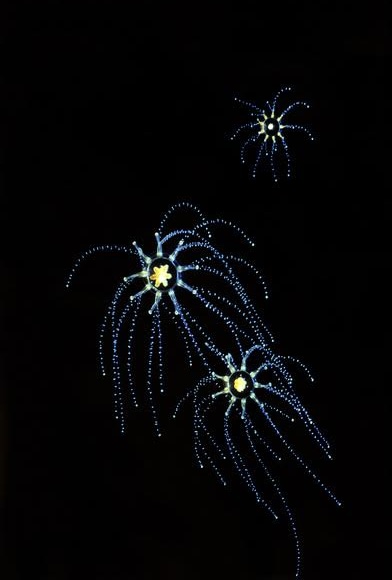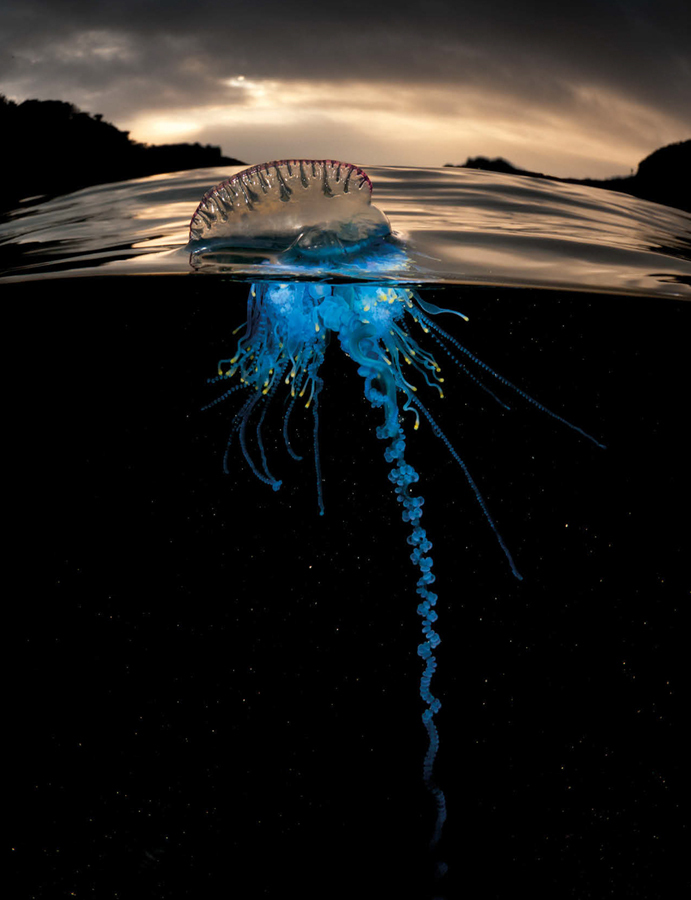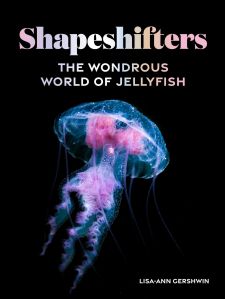They are so adaptable and so perfectly suited to changing environments they have outlived 99 percent of the species that have ever existed. And still they thrive.
Jellyfish have fascinated me since I was a kid. I remember a ferry ride with my grandmother that was much too short because I was busy looking over the side at these amazing creatures in the water.
A quirk has emerged over the past couple of years when I walk on the beach. Whenever I come across insects struggling in the water or with their wings stuck in the damp sand, I give them somewhere dry to recover. More often than not, they want to stay on my hand until they’re ready to fly away. Fish that are out of water, I return.
Since I discovered Glaucus, which I know as blue dragons, they have been one of my favourite creatures to try and save. Carefully, so I don’t get stung. Over the past couple of months, I’ve started trying to save jelly blubbers, even more carefully.
After reading this book, I’ve realised I need to be even more cautious. The sting of a jellyfish, at 40,000 G’s (!), is the “fastest process known in the animal kingdom”. It’s the world’s most venomous animal.
This book is divided into eight sections. Because I can’t help myself, here’s my favourite jellyfish from each section.
Poisonous: the long stingy stringy thingy (Rhizophysa filiformis), for its name alone.
Troublesome: jelly blubber (Catostylus mosaicus), the jellyfish I watched from the ferry so many years ago.
Beautiful: flower hat jelly (Olindias formosus) are fun because they change colour. By day, it’s the two rarest jellyfish colours, bright pink and black. “But by night, or under ultraviolet light, it becomes radiantly beautiful, with the body glowing softly blue, accentuated by an aura of luminous, golden-tipped tentacles.”
Amazing: by-the-wind sailor (Velella velella). Due to their sails, they’re at the mercy of the wind. They can be either left or right handed, though, so a breeze that spells disaster for a right hander will ensure the safety of a lefty, and vice versa.
Tiny: sticking jelly (Cladonema radiatum) can often be found in home aquariums. They’re “tiny, transparent beads bearing numerous threads attached to the insides of the glass walls.”

Huge: bitey whitey (Lobonema smithii). Seriously, I need to know who names jellyfish.
Strange: sea lizard (Glaucus atlanticus), which aren’t jellyfish but sea slugs. These are my beloved blue dragons. This sea slug “preys on jellyfish and consumes their stinging cells without triggering them to discharge, then deploys these weapons for its own defense.”
Obscure: painted box jellyfish (Chirodectes) have markings that provide camouflage in their coral reef habitat.
I’m not sure what I thought bluebottles were exactly but I didn’t realise they were jellyfish. I was stung by one when I was about three. While I don’t remember the sting, I know the story well and I’m always wary when I see them on the shoreline. I don’t want to repeat the experience.

This is a beautiful book with incredible photography. The descriptions of each jellyfish are, well, descriptive, in that they tell you what they look like, where you’ll find them and oftentimes the symptoms you’ll experience if you’re stung by one. I wish there’d been some more fun facts but I still know a lot more about jellyfish today than I did yesterday. I’m keen to learn more.
Once Upon a Blurb
Shapeshifters: The Wondrous World of Jellyfish is a breathtaking collection of photographs and expert commentary that shed light on the most mysterious creatures of the deep sea.
Jellyfish come in a dazzling array of colours, shapes, and sizes, drifting through every ocean, from the surface to the deepest of the deep seas, and are even found in freshwater locations. These ancient creatures, also called sea jellies (they are not, technically, fish), are so otherworldly and luminous that it is no wonder they are often compared to mythical shapeshifters. Some are so delicate that they shatter with the smallest disturbance to the water, while the tenacity of others means they can withstand almost any temperature, any salinity, starvation, and even being dismembered. And some are truly biologically immortal.
This visually breathtaking book showcases 100 species of jellyfish within its pages —from the ubiquitous Aurelia to the enigmatic Velella — along with astounding facts about these fascinating marine life-forms. Some are splendid, some strange, some poisonous, some deadly. Some carry surprising secrets, and some are barely known, but every one of them is remarkable and has a tale to tell. An introduction by noted expert Lisa-ann Gershwin, with her commentary throughout, invites you into the wondrous world of jellyfish.
